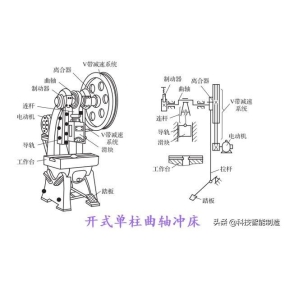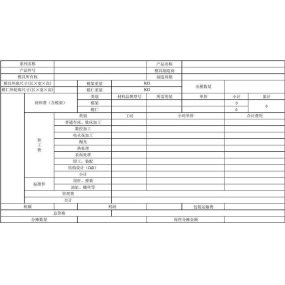Five axis CNC Machining is a mode of CNC machine tool machining. Five axis CNC machining has the advantages of high precision and high flexibility, and is suitable for processing complex shaped parts. However, the initial cost is high and programming is difficult. 1、 Five axis CNC machining has the following advantages: it is suitable for processing complex shaped parts. Five axis machining centers can achieve the machining of complex parts that are difficult or almost impossible to machine with general machining centers, and are therefore widely used in aerospace, shipbuilding, mold and other processing industries.  high-precision machining. A five axis machining center performs dimensional analysis on materials through five axis positioning to complete testing, so the accuracy of a five axis vertical machining center is higher than that of a regular machining center. Processed firmly. Mastering computers, eliminating human errors, ensuring consistent machining of parts, and ensuring solid quality. Highly flexible. When processing object conversion, it is generally only necessary to change the numerical control order, which shows good adaptability and can save a lot of time for production. Based on a five axis machining center, an automated production system with high flexibility can be formed. 2、 Five axis CNC machining also has some drawbacks: high initial cost. The cost of purchasing a 5-axis CNC machine tool and its basic software is very high, much higher than the cost required for a 3-axis machining center. Similarly, the maintenance requirements for machines are more challenging than traditional machine tools. This also directly increases the processing cost of 5-axis machined parts. Programming difficulties. The two additional rotational movements and their spatial trajectories are abstract and complex. For example, to handle free-form surfaces, multiple coordinate transformations, complex spatial geometric operations, and consideration of the coordination of axis movements are required. All of these are necessary to avoid collisions and interference and ensure correct interpolation of motion quantities. Therefore, to achieve the required machining accuracy and surface quality, programming difficulty becomes even greater.
high-precision machining. A five axis machining center performs dimensional analysis on materials through five axis positioning to complete testing, so the accuracy of a five axis vertical machining center is higher than that of a regular machining center. Processed firmly. Mastering computers, eliminating human errors, ensuring consistent machining of parts, and ensuring solid quality. Highly flexible. When processing object conversion, it is generally only necessary to change the numerical control order, which shows good adaptability and can save a lot of time for production. Based on a five axis machining center, an automated production system with high flexibility can be formed. 2、 Five axis CNC machining also has some drawbacks: high initial cost. The cost of purchasing a 5-axis CNC machine tool and its basic software is very high, much higher than the cost required for a 3-axis machining center. Similarly, the maintenance requirements for machines are more challenging than traditional machine tools. This also directly increases the processing cost of 5-axis machined parts. Programming difficulties. The two additional rotational movements and their spatial trajectories are abstract and complex. For example, to handle free-form surfaces, multiple coordinate transformations, complex spatial geometric operations, and consideration of the coordination of axis movements are required. All of these are necessary to avoid collisions and interference and ensure correct interpolation of motion quantities. Therefore, to achieve the required machining accuracy and surface quality, programming difficulty becomes even greater.
Hello! Welcome to EMAR's website!
 English
English » »
» »
 Spanish
Spanish Arabic
Arabic French
French Portuguese
Portuguese Belarusian
Belarusian Japanese
Japanese Russian
Russian Malay
Malay Icelandic
Icelandic Bulgarian
Bulgarian Azerbaijani
Azerbaijani Estonian
Estonian Irish
Irish Polish
Polish Persian
Persian Boolean
Boolean Danish
Danish German
German Filipino
Filipino Finnish
Finnish Korean
Korean Dutch
Dutch Galician
Galician Catalan
Catalan Czech
Czech Croatian
Croatian Latin
Latin Latvian
Latvian Romanian
Romanian Maltese
Maltese Macedonian
Macedonian Norwegian
Norwegian Swedish
Swedish Serbian
Serbian Slovak
Slovak Slovenian
Slovenian Swahili
Swahili Thai
Thai Turkish
Turkish Welsh
Welsh Urdu
Urdu Ukrainian
Ukrainian Greek
Greek Hungarian
Hungarian Italian
Italian Yiddish
Yiddish Indonesian
Indonesian Vietnamese
Vietnamese Haitian Creole
Haitian Creole Spanish Basque
Spanish Basque












